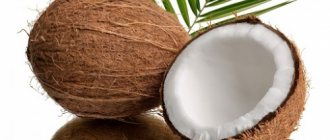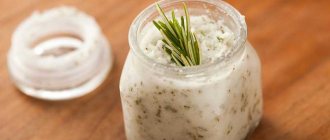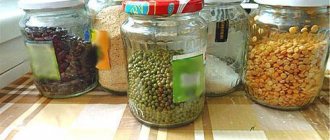Coconut is an exotic fruit from the palm tree, containing in its pulp a lot of fats, proteins and vegetable carbohydrates. To get all these valuable elements, you need to know how to store a coconut at home, whole and open. It should be borne in mind that coconut derivatives - shavings, milk and oil - require different maintenance conditions. Their shelf life is much shorter, and consuming stale ingredients will not be beneficial and can be dangerous. That is why it is necessary to follow some rules.
How to choose
When choosing a palm fruit, first of all you should carefully examine it and make sure that its peel does not have cracks.
Coconut does not ripen during storage, so you need to buy it when it is completely ripe.
The ripened fruit has a brown peel with a rough surface. In its lower part there should be 3 dots of the same color, but darker in tone. The area around these points should be solid, and the rest of the surface of the peel should be free of various stains, wet areas and mold.
If you shake a ripe fresh nut, liquid should splash inside, and it should be quite weighty. Long-term storage causes the copra (fruit pulp) to dry out, making the nut lighter.
Main selection criteria
To keep a product fresh for a long period of time, you need to choose it correctly.
Appearance
It is necessary to buy only ripe coconut. During transportation, this fruit does not ripen. It is acceptable to eat a nut that has a rough shell. It should be brown in color with no green areas.
Holes
There should be holes at one end of the coconut. There should always be 3 of them. It is important that these places are dry and clean. There should be no mold or rot on the surface. It is important that the holes do not bend even under strong pressure.
Under what conditions should it be stored?
Until the peel is opened, fresh nuts are stored well in cool, dry places (pantries, kitchen cabinets) for about 30 days under the following conditions:
- temperature -+20°C;
- air humidity – 70%.
Storing a coconut for more than 1 month can cause the liquid inside it to turn sour and the copra (fruit pulp) to begin to dry out.
Storage table
| Whole nut storage temperature | Shelf life |
| 0 to +5 | 7-10 days |
| +5 and above | no more than a week |
| Stable temperature +5 | about a month |
Cold storage
It is best to store coconut in the refrigerator. Even when purchasing, you should choose the fruit that was in the cold. The shelf life on the refrigerator shelf will be about 3 months.
Most often, the nut has a label with all the information about it and instructions on how to store coconut at home. To this we must add that palm fruits should be kept separately from fruits that produce volatile ethylene gas, which accelerates ripening (apples, bananas, pears, etc.).
Storing Broken Coconut
After opening the coconut, it should be stored exclusively in the refrigerator at +5°C. Under such conditions, it can remain fresh for 1 - 2 days. But before storing an opened coconut, the liquid that is inside it should be poured into a glass, ceramic or plastic container and closed tightly. Being in a nut, coconut milk will quickly turn sour. And in a separate container it will remain fresh for up to 7 days.
Storing an opened coconut in the refrigerator will last longer if you wrap it in cling film. This prevents oxidation of the pulp when it interacts with oxygen.
Storage conditions for opened coconut:
- temperature -+5°C;
- air humidity -70%.
Pulp storage
You can make many interesting and functional things from coconut shells, and use the pulp and milk as you wish. After opening the fruit, even in a cold place, its pulp cannot be stored for a long time. In this case, it should be carefully collected on a plate and covered with film. The pulp should be kept on the refrigerator shelf for no more than 24 hours at a temperature of +5°C.
Coconut pulp is stored longer in the freezer. It is separated from the shell and crushed with a food processor, blender or meat grinder. Because it is quite hard, it is difficult to rub it by hand.
To freeze the crushed copra, sprinkle a little coconut milk. Place in small portions in sealed bags.
Frozen coconut pulp can be stored for 6 to 8 months. And you need to use it without defrosting, so as not to get a tasteless watery substance.
Shredded coconut meat cannot be re-frozen.
Dried fruit
The pulp, once dried, can be stored for up to 1 year in closed food containers or cotton bags.
Coconut flakes retain their taste perfectly in a dry, cool and ventilated room. Any place other than the refrigerator will do.
The coconut is dried in this way: the pulp is crushed in a food processor, then dried for three hours in the oven at a temperature of 60*C. Then cool and put into containers. By the way, you can buy dried coconut already packaged.
For reference!
The pulp is dried in a microwave oven or using an electric dryer in normal mode.
Storing milk
Fresh milk from a ripe fruit can retain its original properties for no more than 24 hours, even when on the refrigerator shelf. The same product in a special sealed package can be preserved for 12 months or more, subject to the storage conditions specified by the manufacturer.
Once the factory package of milk is opened, its shelf life is reduced to 2 days. In this case, it is better to immediately pour it into a glass container, close it tightly and put it in the refrigerator. Cream that may appear on the surface of the liquid does not mean that it has begun to spoil.
Due to the increased fat content, freezing milk is undesirable. During the defrosting process, it will begin to separate, as a result of which it will lose its taste and beneficial qualities.
Culinary tricks
Since coconut milk is an exotic drink, its characteristics should be taken into account when preparing food.
Coconut milk is not boiled in its pure form, as after boiling the drink will begin to curdle. During cooking, milk is added at the very last stage, heating it, but not bringing it to a boil.
Yes, you can cook oatmeal, semolina and rice porridge with coconut milk, but the drink must be diluted with water in equal quantities.
Coconut milk can be added to coffee immediately after preparing it. Dried milk is first poured into a mug, and only after that the coffee drink is poured into it.
The amount of milk is calculated based on the tastes and preferences of the person cooking.
Before you froth the coconut milk, you need to cool it by keeping it in the refrigerator for 12 to 24 hours. Then you need to open the jar (without shaking the contents), separate the thick part (cream), transferring it to another container. After this, the cream can be whipped with a whisk or mixer until stiff peaks form.
Powdered coconut milk is diluted with cold or warm water. For 200 ml of water you will need 2-3 tbsp. l. powder. First, the dry substance is poured into the container, and then water is gradually poured while constantly stirring the liquid.
When preparing sauces, coconut milk can be replaced with low-fat cream (10-15%). You can add regular milk and a little coconut to desserts without losing taste.
Knowing some tricks on how to handle coconut flakes can speed up cooking and make the dishes themselves very tasty and aromatic.
Coconut flakes are widely used in cooking. Most often it is used in the preparation of desserts: added to rolls, cakes and pastries, creams and sweet sauces are prepared with it. Coconut pulp is often used as a topping: it is used to decorate candies, curd cheeses, bars, cookies and chocolate bars.
It may seem unusual to use chips in savory dishes. Haute cuisine chefs add it to meat products to give them special piquancy and sophistication. And in Asian cuisine, an unusual sauce is popular - a mixture of chili peppers and coconut flakes.
What does it go with?
Coconut pulp goes well with almost all foods. It goes great with sweet chocolate and ice cream, nuts and fruits, meat and fish. It is used in sauces for hearty dishes, and as a breading for frying fish and cauliflower.
How to make it soft?
When the shavings have been sitting for a long time and have turned into a solid mass, the question arises: “How to soak coconut shavings?” You can try to save the product if it has not absorbed foreign odors. If the aroma of coconut pulp has changed, then the taste will be unpleasant. To soften coconut shavings, place them in a deep plate, add a small amount of water and leave overnight. The next morning, the chips will lose their former hardness and will be ready for use.
Multi-colored shavings are perfect for decorating baked goods. You can change the color of the chips using dry food coloring. To do this, pour the desired amount of coconut flakes into a plastic bag and add a little dye. The bag is tied into a knot, and then shaken and squeezed with your hands until the chips turn a new color.
A cake decorated with coconut shavings is the most popular decoration option. The dessert can be sprinkled with shavings only on top or added additionally on the sides. While it’s easy to sprinkle the top of the cake, difficulties arise with the side surface.
Another original way to decorate is to decorate the surface of the cake with cream and sprinkle with shavings. To do this, prepare any type of cream, which is placed in a culinary syringe. By squeezing out a small amount of the mixture, the cake is dotted with cream and sprinkled with coconut flakes on top.
The option of replacing coconut shavings depends on the recipe and the desired effect. You can replace coconut pulp:
- Grated nuts, confectionery powder or grated chocolate. This method is suitable for baked goods in which coconut flakes are used as a decoration and do not affect the taste.
- Coconut oil. In the filling or baking cream, you can replace the shavings with coconut oil. It will completely replicate the taste and smell of the original product.
- Cumin, cinnamon or ground crackers. This replacement option is suitable for savory dishes.
In recipes where coconut is the main ingredient, it cannot be replaced. It's hard to imagine a coconut cookie, cupcake or bounty cake without the main ingredient.
Storing Coconut Oil
Coconut oil should be stored in the refrigerator after opening the jar. It is important to comply with the following standards:
- temperature - +5°C -+8°C for cold-pressed and unrefined product. Refined can withstand storage at +25°C;
- air humidity should be at 65%;
- the storage container should be selected from opaque glass or plastic;
- The lid should fit snugly against the edges of the jar.
Neglect of storage rules and the influence of temperatures below +5°C have a detrimental effect on the quality of the oil.
Signs of a spoiled product:
- the appearance of a bitter taste and unpleasant odor;
- oil with a solid structure loses its white color, and liquid oil ceases to be transparent;
- the product separates and lumps and grains form in it;
- the color of the oil becomes yellowish;
- the surface of the product becomes covered with mold spots.
Coconut oil that shows obvious signs of spoilage should not be stored further. This product must be disposed of immediately.
Signs of a spoiled product
A spoiled product should not be consumed, as this may cause poisoning. Below are signs that will help you determine that a coconut has gone bad and should be thrown away.
- A whole coconut does not make gurgling sounds when shaken (there is no liquid inside, or there is little of it); there are spots, dents and cracks on the surface of the fruit; an unpleasant, pungent odor emanates from the shell; presence of mold and rot.
- Coconut water has a sour smell and sour taste.
- The color of the pulp has a yellowish-pinkish tint; consistency is soft, heterogeneous; the presence of gray or greenish inclusions. Pay attention to the presence of a subtle white coating. All these are signs of a spoiled fetus.
- Dried coconut has a rancid, unpleasant taste and smell; The chips are oily, not crumbly.
- Milk is considered spoiled if it has acquired a foreign smell or taste, and a grayish tint or pinkish mold has appeared.
In conclusion, it can be noted that it is necessary to split the fruit only before eating it. When choosing a nut, you should carefully inspect it for any visible damage. Dried coconut lasts the longest. To achieve the longest shelf life, follow the rules and recommendations given in the article.











